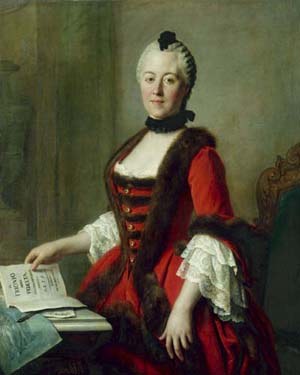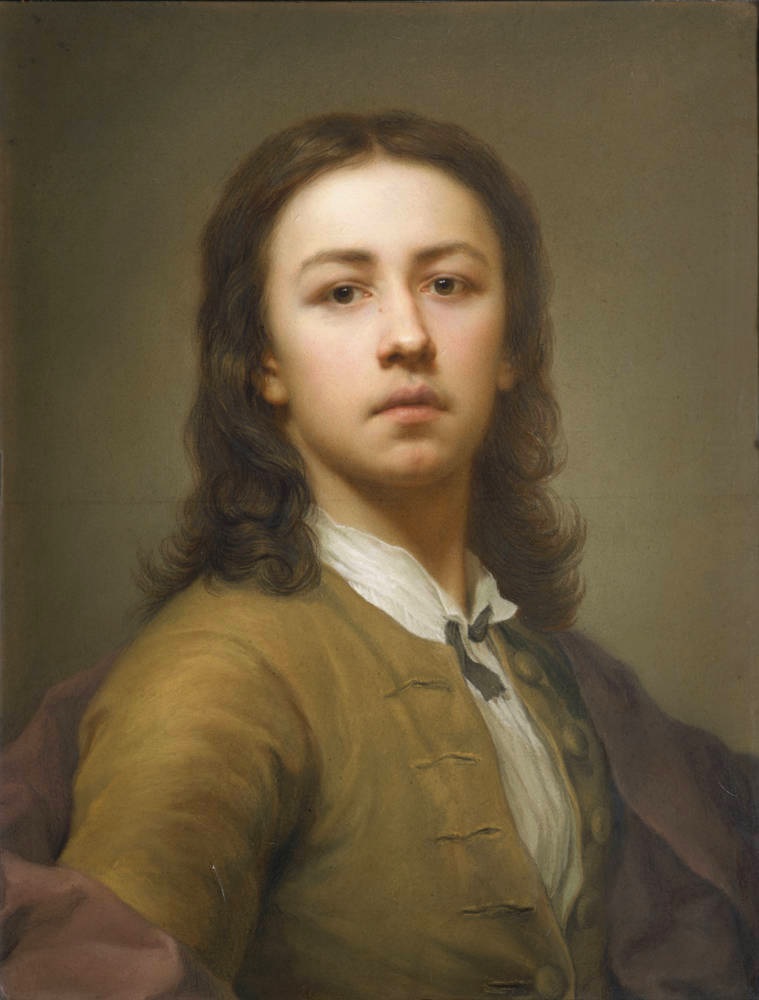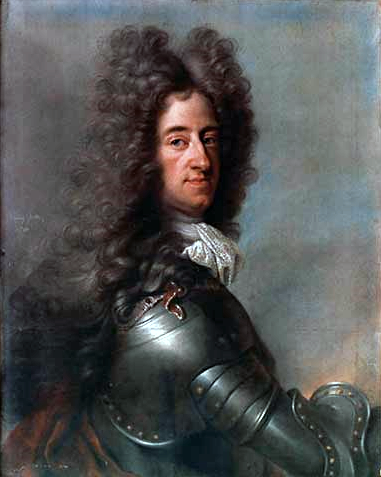|
Maria Antonia Walpurgis Of Bavaria
Maria Antonia, Princess of Bavaria, Electress of Saxony (18 July 1724 – 23 April 1780) was a German princess, composer, singer, harpsichordist and patron of the arts, known particularly for her operas: ''Il trionfo della fedeltà'' (“The triumph of fidelity”) and ''Talestri, regina delle amazoni'' (“Talestri, queen of the Amazons”). She was Electress of Saxony as the wife of Frederick Christian, Elector of Saxony. Following the latter's death in 1763, she became the Regent of Saxony for their son Frederick Augustus I of Saxony. Family and background Baptized ''Maria Antoina Walpurgis Symphorosa'', she was born at Nymphenburg Palace in Munich to Archduchess Maria Amalia of Austria and Elector Karl Albert of Bavaria. Throughout her life she received an outstanding education, particularly in the arts; including that of painting and writing poetry, as well as music. She was the fourth of seven children of the Elector and his wife. Marriage A marriage by proxy to ... [...More Info...] [...Related Items...] OR: [Wikipedia] [Google] [Baidu] |
Anton Raphael Mengs
Anton Raphael Mengs (22 March 1728 – 29 June 1779) was a German people, German painter, active in Dresden, Rome, and Madrid, who while painting in the Rococo period of the mid-18th century became one of the precursors to Neoclassicism, Neoclassical painting, which replaced Rococo as the dominant painting style in Europe. Early life Mengs was born in 1728 at Ústí nad Labem (German: Aussig) in the Kingdom of Bohemia, the son of Ismael Mengs, a Denmark, Danish painter who eventually established himself at Dresden, where the court of Electorate of Saxony#Saxony-Poland, Saxonian-Polish electors and kings was. His older sister, Therese Maron, was also a painter, as was his younger sister, Julia Charlotte Mengs, Julia. His and Therese's births in Bohemia were mere coincidence. Their mother was not their father's wife; Ismael carried on a years-long affair with the family's housekeeper, Charlotte Bormann. In an effort to conceal the births of two illegitimate children, Ismael took ... [...More Info...] [...Related Items...] OR: [Wikipedia] [Google] [Baidu] |
Electorate Of Saxony
The Electorate of Saxony, also known as Electoral Saxony (German: or ), was a territory of the Holy Roman Empire from 1356–1806. It was centered around the cities of Dresden, Leipzig and Chemnitz. In the Golden Bull of 1356, Emperor Charles IV designated the Duchy of Saxe-Wittenberg an electorate, a territory whose ruler was one of the prince-electors who chose the Holy Roman emperor. After the extinction of the male Saxe-Wittenberg line of the House of Ascania in 1422, the duchy and the electorate passed to the House of Wettin. The electoral privilege was tied only to the Electoral Circle, specifically the territory of the former Duchy of Saxe-Wittenberg. In the 1485 Treaty of Leipzig, the Wettin noble house was divided between the sons of Elector Frederick II into the Ernestine and Albertine lines, with the electoral district going to the Ernestines. In 1547, when the Ernestine elector John Frederick I was defeated in the Schmalkaldic War, the electoral district and el ... [...More Info...] [...Related Items...] OR: [Wikipedia] [Google] [Baidu] |
Libretto
A libretto (Italian for "booklet") is the text used in, or intended for, an extended musical work such as an opera, operetta, masque, oratorio, cantata or Musical theatre, musical. The term ''libretto'' is also sometimes used to refer to the text of major liturgical works, such as the Mass (liturgy), Mass, requiem and sacred cantata, or the story line of a ballet. ''Libretto'' (; plural ''libretti'' ), from Italian, is the diminutive of the word ''wiktionary:libro#Italian, libro'' ("book"). Sometimes other-language equivalents are used for libretti in that language, ''livret'' for French works, ''Textbuch'' for German and ''libreto'' for Spanish. A libretto is distinct from a synopsis or scenario of the plot, in that the libretto contains all the words and stage directions, while a synopsis summarizes the plot. Some ballet historians also use the word ''libretto'' to refer to the 15 to 40 page books which were on sale to 19th century ballet audiences in Paris and contained a ve ... [...More Info...] [...Related Items...] OR: [Wikipedia] [Google] [Baidu] |
Christoph Willibald Gluck
Christoph Willibald (Ritter von) Gluck (; 2 July 1714 – 15 November 1787) was a composer of Italian and French opera in the early classical period. Born in the Upper Palatinate and raised in Bohemia, both part of the Holy Roman Empire, he gained prominence at the Habsburg court at Vienna. There he brought about the practical reform of opera's dramaturgical practices for which many intellectuals had been campaigning. With a series of radical new works in the 1760s, among them '' Orfeo ed Euridice'' and '' Alceste'', he broke the stranglehold that Metastasian '' opera seria'' had enjoyed for much of the century. Gluck introduced more drama by using orchestral recitative and cutting the usually long da capo aria. His later operas have half the length of a typical baroque opera. Future composers like Mozart, Schubert, Berlioz and Wagner revered Gluck very highly. The strong influence of French opera encouraged Gluck to move to Paris in November 1773. Fusing the traditions ... [...More Info...] [...Related Items...] OR: [Wikipedia] [Google] [Baidu] |
Pietro Torri
Pietro Torri (c. 1665 or earlier, in Peschiera del Garda_Pietro_Torri,_Neue_Hofkapelle_München,_Christoph_Hammer_(2)_–_Le_Triomphe_de_la_Paixat_Christoph_Hammer">_Pietro_Torri,_Neue_Hofkapelle_München,_Christoph_Hammer_(2)_–_Le_Triomphe_de_la_Paixat_Discogs">Christoph_Hammer_(2)_–_Le_Triomphe_de_la_Paix">Christoph_Hammer">_Pietro_Torri,_Neue_Hofkapelle_München,_Christoph_Hammer_(2)_–_Le_Triomphe_de_la_Paixat_Discogs_website._–_6_July_1737,_in_Munich)_was_an_Italian_Baroque_music.html" "title="Discogs.html" ;"title="Christoph Hammer (2) – Le Triomphe de la Paix">Christoph Hammer"> Pietro Torri, Neue Hofkapelle München, Christoph Hammer (2) – Le Triomphe de la Paixat Discogs">Christoph Hammer (2) – Le Triomphe de la Paix">Christoph Hammer"> Pietro Torri, Neue Hofkapelle München, Christoph Hammer (2) – Le Triomphe de la Paixat Discogs website. – 6 July 1737, in Munich) was an Italian Baroque music">Baroque composer. Life From 1684 to 1688, Torri served as th ... [...More Info...] [...Related Items...] OR: [Wikipedia] [Google] [Baidu] |
Johann Adolph Hasse
Johann Adolph Hasse (baptised 25 March 1699 – 16 December 1783) was an 18th-century German composer, singer and teacher of music. Immensely popular in his time, Hasse was best known for his prolific operatic output, though he also composed a considerable quantity of sacred music. Married to soprano Faustina Bordoni and a friend of librettist Pietro Metastasio, whose libretti he frequently set, Hasse was a pivotal figure in the development of '' opera seria'' and 18th-century music. Early career Hasse was baptised in Bergedorf near Hamburg where his family had been church organists for three generations. His career began in singing when he joined the Hamburg Oper am Gänsemarkt in 1718 as a tenor. In 1719 he obtained a singing post at the court of Brunswick, where in 1721 his first opera, ''Antioco'', was performed; Hasse himself sang in the production. He is thought to have left Germany during 1722. During the 1720s he lived mostly in Naples, dwelling there for six or seven ... [...More Info...] [...Related Items...] OR: [Wikipedia] [Google] [Baidu] |
Nicola Porpora
Nicola (or Niccolò) Antonio Porpora (17 August 16863 March 1768) was an Italian composer and teacher of singing of the Baroque era, whose most famous singing students were the castrati Farinelli and Caffarelli. Other students included composers Matteo Capranica and Joseph Haydn. Biography Porpora was born in Naples. He graduated from the music conservatory Poveri di Gesù Cristo of his native city, where the civic opera scene was dominated by Alessandro Scarlatti. Porpora's first opera, ''Agrippina,'' was successfully performed at the Neapolitan court in 1708. His second, ''Berenice'', was performed at Rome. In a long career, he followed these up by many further operas, supported as ''maestro di cappella'' in the households of aristocratic patrons, such as the commander of military forces at Naples, prince Philip of Hesse-Darmstadt, or of the Portuguese ambassador at Rome, for composing operas alone did not yet make a viable career. However, his enduring fame rests chiefly ... [...More Info...] [...Related Items...] OR: [Wikipedia] [Google] [Baidu] |
Giovanni Alberto Ristori
Giovanni Alberto Ristori (1692 - 7 February 1753) was an Italian opera composer and conductor. He was the son of Tommaso Ristori, the leader of an opera troupe belonging to the King of Poland and Elector of Saxony August II the Strong (based in Dresden). August II lent his opera troupe to the Russian Empress Anna for the celebration of her coronation in Moscow. Ristori died in Dresden. ''Calandro'', his opera in three acts to a libretto by Stefano Benedetto Pallavicino, was both the first ''opera buffa'' written in Germany and also the first Italian opera performed in Russia. It was given under his, and his father's direction, with thirteen actors and nine singers including Ludovica Seyfried, Margherita Ermini and Rosalia Fantasia, in 1731 in Moscow. In 1916 the German musicologist Curt Rudolf Mengelberg published the first study on Ristori and his music: Curt Rudolf Mengelberg, ''Giovanni Alberto Ristori: ein Beitrag zur Geschichte italienischer Kunstherrschaft in Deutschlan ... [...More Info...] [...Related Items...] OR: [Wikipedia] [Google] [Baidu] |
Giovanni Porta
Giovanni Porta (c. 1677 – 21 June 1755) was an Italian opera composer. His opera ''Argippo'', to a libretto by Domenico Lalli, was premiered in Venice in 1717.Freeman, Daniel E. (1992)''The Opera Theater of Count Franz Anton Von Sporck in Prague''Stuyvesant, N.Y.: Pendragon Press. p. 166/ref> Porta is believed to have been born in Venice. One of the masters of early 18th-century opera and one of the leading Venetian musicians, Porta made his way from Rome, to Vicenza, to Verona, then London where his opera '' Numitore'' was performed in 1720 by the Royal Academy of Music (1719), and eventually back to Venice and Verona, and finally Munich, where he spent the last 18 years of his life. Selected recordings * Aria ''Madre diletta'' (from Ifigenia in Aulide) on Drama Queens Joyce DiDonato Alan Curtis (conductor) Virgin Classics 2012 * Aria ''Mormorando quelle fronde'' (from La costanza combattuta in amore) on Venezia recital Max Cencic Virgin Classics 2013 * Sinfonia f ... [...More Info...] [...Related Items...] OR: [Wikipedia] [Google] [Baidu] |
Giovanni Battista Ferrandini
Giovanni Battista Ferrandini (c. 1710 – 25 October 1791), an Italian composer of the Baroque and Classical eras, was born in Venice, Italy and died in Munich, at the age of about 81. He was a child prodigy and entered the service of Duke Ferdinand Maria Innocenz of Bavaria at the age of 12 as an oboist. The newly constructed Bavarian Court Theatre (the Old Residenztheater, now known as the Cuvilliés Theatre after the architect) in Munich opened on 12 October 1753 with Ferrandini's opera ''Catone in Utica.'' A recording of the opera made 250 years later in the same theatre is available (Oehms Classics OC 901).Darwin Floyd Scott ''For the love of music: festschrift in honor of Theodore Front'' 2002 Page 52 "... Giovanni Battista Ferrandini (ca. 1710-1791) was active in Munich, where his opera seria Catone in Utica opened the new Cuvillies Theater at the Residenz in 1753. In 1755, Ferrandini retired to Padua, where in 1771, Wolfgang Amadeus Mozart and his father Leopold M ... [...More Info...] [...Related Items...] OR: [Wikipedia] [Google] [Baidu] |
Maria Antonia Von Bayern By Pietro Antonio Conte Rotari
Maria may refer to: People * Mary, mother of Jesus * Maria (given name), a popular given name in many languages Place names Extraterrestrial *170 Maria, a Main belt S-type asteroid discovered in 1877 *Lunar maria The lunar maria (; singular: mare ) are large, dark, basaltic plains on Earth's Moon, formed by ancient asteroid impacts on the far side on the Moon that triggered volcanic activity on the opposite (near) side. They were dubbed , Latin for 'seas' ... (plural of ''mare''), large, dark basaltic plains on Earth's Moon Terrestrial *Maria, Maevatanana, Madagascar *Maria, Quebec, Canada *Maria, Siquijor, the Philippines *María, Spain, in Andalusia *Îles Maria, French Polynesia *María de Huerva, Aragon, Spain *Villa Maria (other) Arts, entertainment, and media Films *Maria (1947 film), ''Maria'' (1947 film), Swedish film *Maria (1975 film), ''Maria'' (1975 film), Swedish film *Maria (2003 film), ''Maria'' (2003 film), Romanian film *Maria (2019 film), ''Maria'' ... [...More Info...] [...Related Items...] OR: [Wikipedia] [Google] [Baidu] |
Brewery
A brewery or brewing company is a business that makes and sells beer. The place at which beer is commercially made is either called a brewery or a beerhouse, where distinct sets of brewing equipment are called plant. The commercial brewing of beer has taken place since at least 2500 BC; in ancient Mesopotamia, brewers derived social sanction and divine protection from the goddess Ninkasi. Brewing was initially a cottage industry, with production taking place at home; by the ninth century, monasteries and farms would produce beer on a larger scale, selling the excess; and by the eleventh and twelfth centuries larger, dedicated breweries with eight to ten workers were being built. The diversity of size in breweries is matched by the diversity of processes, degrees of automation, and kinds of beer produced in breweries. A brewery is typically divided into distinct sections, with each section reserved for one part of the brewing process. History Beer may have been known in Neol ... [...More Info...] [...Related Items...] OR: [Wikipedia] [Google] [Baidu] |








